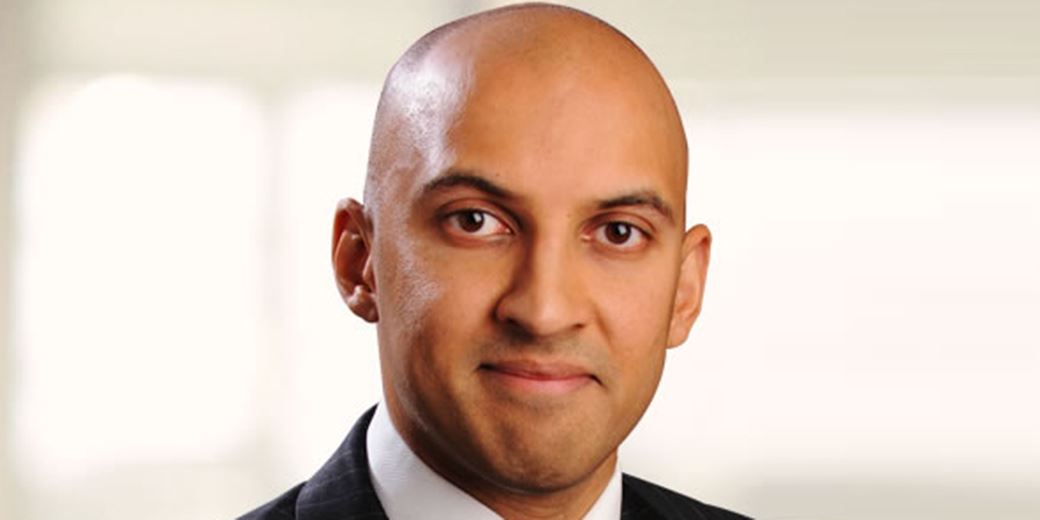There might be light at the end of the tunnel, but it ain’t here yet.
Elite bond manager Rick Patel reflects on a ‘challenging year’

Latest Newsletter
Value stance rewards managers with first AAA rating
The year comes to a close with a host of managers gaining their AAA wings.
Real Life: A cheaper, smarter way to fly business to the US
Companies are clamping down on travel costs. Here’s how to travel in comfort while keeping the expenses department happy.
Community
Investing in bonds is all about limiting risk and having a predictable stream of income. Not so much in 2022.
As inflation hit a 40-year high, pushing up interest rates, the US government bond market has found itself unable to offer much comfort to investors looking to shield themselves from market volatility.
Yet despite the bleak conditions, Fidelity International fund manager Rick Patel is optimistic that inflation is on a downward trajectory which will see rates revert to pre-pandemic levels of around 2% over the next three to five years.
The fixed income manager, who oversees the $2bn Fidelity US Dollar Bond fund, said inflation would be significantly lower next year due to easing of ‘supply chain bottlenecks, transportation costs, [and falling] commodity prices’ – although unpredictable currency moves might have a knock-on effect on inflation, both in the US and globally.
Patel, a member of Citywire’s Bonds Elite, invests heavily in US Treasuries – which make up the largest component of his fund along with banks, US energy and healthcare. Despite capital losses on Treasuries this year, the key for him ‘has been having the liquidity and the ammunition from a defensive starting point’.
‘If you look at some of the sharp moves we’ve seen in sectors like European banks – one of the largest underperforming sectors in the global markets – we’ve had the ability by having a large defensive allocation to government bonds, primarily Treasuries, to use that as funding to take advantage of those opportunities.
‘Similarly, emerging markets have had a very challenging year. So, we’ve been able to move from our more defensive starting point to take advantage of the opportunities in emerging markets.’
He said distress in the Chinese credit risk market allowed him to buy small positions across a range of higher-quality companies that historically have been very expensive.
‘Similarly, European banks have been under a huge amount of pressure this year because of the very heavy supply volumes and the concerns around a European recession. Banks have had to issue debt at yields of 7-8%, compared with perhaps 1-2% this time last year.’
Quantitative tightening
Going back to Treasuries, the global financial crisis changed the composition of people dealing in the market and led to inconsistency in finding reliable sellers and buyers. Then the pandemic saw the Federal Reserve assuring the markets with quantitative easing, buying mortgage bonds and government debt in huge quantities.
But the Fed recently started quantitative tightening to bring down inflation and is playing a key role in liquidity dynamics.
‘Relative to previous years, reliable buyers and sellers have likely fallen, and this perhaps explains the sudden price movements and bouts of high trading volumes seen sporadically throughout 2022.’
Patel said 2022 has been ‘a sort of bear flattener’ with short-term interest rates rising faster than long-term ones. Additionally, inflation-linked bonds have underperformed against regular nominal bonds – meaning that their traditional role of protecting against inflation hasn’t worked.
‘Treasuries have outperformed their inflation equivalents from a duration perspective, [and] that’s very unusual as you go through an inflationary environment. And the reason for that is because the market’s expectation for future inflation has fallen.’
He has been able to navigate the higher inflationary environment by excluding sectors which rely on low interest rates such as auto finance and aircraft leasing from his corporate bond investments.
Patel, who has been managing the fund since 2009, said the liquidity of securities had deteriorated sharply over the past few years, leading to increased transaction costs, especially for issues not in the top 10% most regularly traded securities – which is why he has an unusually high 7% cash holding to act as a buffer.
‘Our strategy has historically always been focused on that 10% of the market that does trade more actively. So that’s something that we’re very conscious about. Transaction costs are an investor’s worst enemy from that perspective.’
He says the cash enables him ‘to buy opportunities as we see them, without having to hedge the duration. One of the most painful things in my experience in a bear market, the likes of which we’ve had this year, is to sell other bonds to buy a bond that you want – you pay so much in transaction costs because nobody else wants to.’
Yet despite the overall deterioration of market liquidity, Patel said the impact on his portfolio had been minimal because of his bias towards high-quality and a contrarian investment approach.
‘Very often we are trying to take the other side of the market’s consensus position – so for example we sell when the market is buying. This approach works well because of liquidity.
‘[Also] we time and size our trades based on axes that our desk flag to us, meaning that we are not buying or selling at the first available price, but rather at a price we like and one that will be most beneficial for our clients.’
Despite these wobbles, Patel said the Treasury market was still the most liquid asset class and would continue to be so, particularly as the slow economic environment makes way for cautious investing.
Latest Newsletter
Amplify Issue 30: The fund groups topping the tree
We analyse which groups have had the biggest inflows and outflows in 2022, look at managers achieving their first AAA ratings, and hear from Rob Kyprianou on why regulation gets it back to front.
Amplify Issue 29: Red hot: 2022’s private market hiring spree
2022 has been a hot year for private markets, but are asset managers putting the brakes on their expansion efforts? Plus, we look at how the bear market has affected launches this year and look at how firms can better communicate their brand values.
Amplify Issue 28: Fill your ESG product gaps
We hear from fund buyers on what they’re looking for from an ESG fund, find out what Neuberger Berman is plotting in the alts world, and learn the winners of Citywire’s Gender Diversity Awards.
Community
